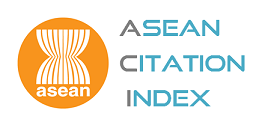Am I Wired to be Happy of My Job? Looking into the Dispositional Predictors of Job Satisfaction
Keywords:
Dispositional theory, Job satisfaction, Big Five Personality Factors, Intelligence, Self-esteemAbstract
Research on the dispositional approach to job satisfaction focuses on personality variables, core self-evaluations, and positive and negative affectivity. However, most of these studies used research-intended scales rather than standard measures of these innate characteristics. Moreover, such a body of work also neglects other inherent factors like cognitive and emotional intelligence. The current study investigated nine dispositional constructs: intelligence (cognitive and emotional), the Big Five personality traits, self-esteem, and their predictive effects on job satisfaction. Forty-three resort employees from a resort in Mactan, Cebu, Philippines, participated in the study. With the respondents’ consent, the researcher accessed their psychological records (e.g., personality, IQ scores). They also completed an online survey that measured the other constructs of interests (i.e., EQ, self-esteem, and job satisfaction). As a result, the respondents reported being relatively more satisfied with intrinsic work characteristics (i.e., work satisfaction) than external ones (i.e., co-workers, supervision, pay, benefits satisfaction). Moreover, out of the nine dispositional predictors considered, only self-esteem significantly predicted job satisfaction. These findings suggest the need for organizations to take care of their employees’ identities by connecting their respective jobs to their self-worth. Such employee programs may include empowered job titles, representations in professional organizations, and social group events valuing employees’ membership. Furthermore, future research endeavors need to look at the information processing involved in self-esteem and job satisfaction.
Downloads
Published
How to Cite
Issue
Section
License
The opinions and ideas expressed in all submissions published in Thammasat Review are solely that of the author(s) and do not necessarily reflect that of the editors or the editorial board.
The copyright of all articles including all written content and illustrations belong to Thammasat Review. Any individuals or organisation wishing to publish, reproduce and distribute a particular manuscript must seek permission from the journal first.








